#giannitsa
Text
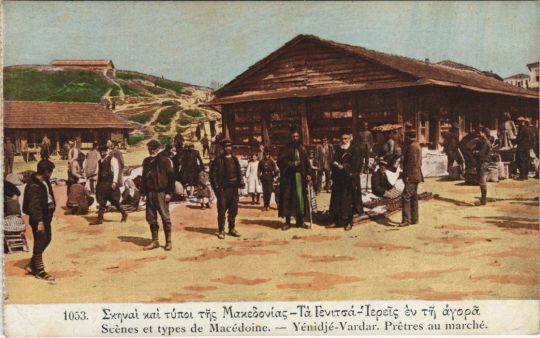
Priests on the market of Yenice-i Vardar, modern-day Giannitsa, Greece
Greek vintage postcard, mailed in 1918
#old#postcard#postkaart#vardar#day#greek#vintage#briefkaart#postal#yenice#ansichtskarte#ephemera#photography#giannitsa#photo#modern#postkarte#tarjeta#mailed#greece#historic#sepia#1918#market#priests#carte postale
3 notes
·
View notes
Text

Night School Aesthetic (Shot 1) 📸🌆✨🌃🏫 🎒
#photography#school#night school#evening school#evening#night photography#night#hometown#small town#greece#greek small town#giannitsa#aesthetic#night school aesthetic#classroom#city#class time#student#student life#slice of life#life#experimental photography#phone photography#light games#buildings#high school#education#greek life#aesthetic#city life
3 notes
·
View notes
Text
Photo: Completed fresco with female deity holding cereals. From the Religious Center of Mycenae, 13th c. B.C. (Archaeological Museum of Nafplion)
"The inhabitants of prehistoric Greece have been producing beer since the Bronze Age, according to the first results of a research program.
Text: Eleutheria Traiou
Beer was not unknown in prehistoric Greece, according to a new research by the School of History and Archaeology of the Aristotle University of Thessaloniki. Strong evidence from a study of archaeobotanical remains indicate that the inhabitants of prehistoric Greece, apart from wine which was the dominant alcoholic drink of that time, produced beer since the Bronze Age. Shortly after the Egyptians, who, according to the oldest testimonies, already knew the art of beer-making from the middle of the 4th millennium B.C., as the Sumerians did as well, almost from the 3rd millennium B.C. It is, however, possible that beer has traveled to Greece from the Near East.
The archaeological finds indicating the presence of prehistoric beer in Greece were dated back to the end of the 3rd - early 2nd millennium B.C. These are ancient remains of herbs, sprouted cereal grains and fragments of ground cereal grains along with small masses, which are interpreted as brewing residues and found in the interior of the houses of two Bronze Age settlements: Archontiko, Pella, Argissa and Thessaly.

Malt remnants and imprinting the house that it was found in. Argissa, Thessaly. 2100 – 1700 B.C. (ph. S.M. Balamoti file)
The study of the archaeobotanical remains is conducted under the PlantCult (ERC) research project implemented in AUTh (since April 2016) and funded by the European Union under Horizon 2020 through the European Research Council Consolidator Grant, Ga. 682529. The new data was recently presented in an article by Ms. Sultana-Maria Valamoti, Associate Professor at the School of History and Archaeology of AUTh and head of the above program. Titled “Brewing beer in wine country? First archaeobotanical indications for beer making in Early and Middle Bronze Age in Greece”, the article was published in the journal “Vegetation History and Archaeobotany".
In Archontiko, the sprouted cereal seeds appear to be frail and are preserved in bad condition, probably due to malting and charring circumstances. In Argissa, where a rich amount of germinated seeds, mainly wheat, and barley, was found, the seeds are preserved in a much better condition. These finds could correspond to malt preparation, as is suggested for similar finds from Middle Bronze Age Serbia. The cereal masses and fragments from Archontiko probably represent more advanced brewing stages. In other words, they could be the result of ground malt before or after mixing with water, while the ground cereals would be added before the fermentation process as an additional source of starch, corresponding to the process followed in the Near East and Egypt.

Grounded cereals from Archontiko, settlement of the Bronze Age at Giannitsa. Is it grounded malt from ground? (ph: © journal "Vegetation History and Archaeobotany").
The production and consumption of alcoholic drinks in the Prehistoric Era and their connection with significant social and economic developments are an important field of archaeological and anthropological research. As far as wine is concerned, its production and consumption in the Aegean world during the Bronze Age is confirmed by a plethora of evidence, while also there is data to support that it is the oldest wine in Europe. Specifically, the study of archaeobotanical data and chemical analysis of ceramic residues from the Neolithic Settlement of Dikili Tash around 4000 B.C.
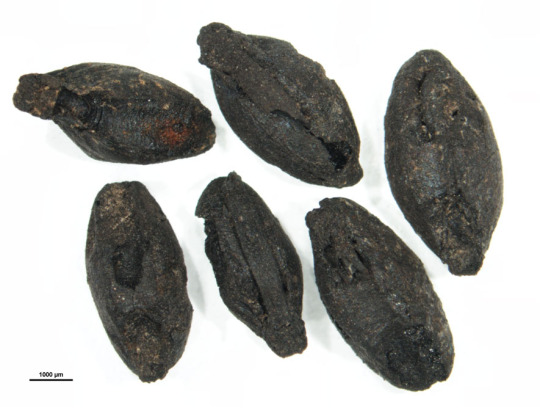
Amongst the evidence confirming vinification process in prehistoric Greece, references from ancient texts are of great importance. But what about beer? Why do the ancient texts ignore beer since the art of its production was known in at least two prehistoric settlements? This is one of the questions that PlantCult (ERC) will try to answer. The program will also conduct a series of data collection experiments in order to investigate the production of prehistoric beer."
2 notes
·
View notes
Text
Ιερά Μητρόπολη Εδέσσης, Πέλλης και Αλμωπίας
Το Σάββατο 17 Ιουνίου 2023, το πρωί, εγκαινιάσθηκε στα Γιαννιτσά ο πρώτος ναός που αφιερώνεται στους Αγίους της Ιεράς Μητροπόλεως Εδέσσης, Πέλλης και Αλμωπίας.
Πρόκειται το Παρεκκλήσιο Πάντων των εν τη Ιερά Μητροπόλει Εδέσσης, Πέλλης και Αλμωπίας Διαλαμψ...
https://orthodoxia.online/ekklisia/egkainia-ierou-naou-sta-giannitsa/?feed_id=39451&_unique_id=648ecea247357
0 notes
Text
Quels sont les 3 1 milliards de projets mis aux enchères en décembre
Quels sont les 3 1 milliards de projets mis aux enchères en décembre
Par Eleni Bota
Trois nouveaux grands projets dotés d’un budget de 1 milliard d’euros devraient être mis aux enchères en décembre.
Il s’agit du projet “Vertical Axis Drama – Amfipoli (Paleokomi) with S.D.I.T.”, l’exploitation et la maintenance du métro de Thessalonique et de l’axe routier EO2 (Mavrovouni – Edessa, Giannitsa Bypass, Chalkidona Bypass).
Le premier appel d’offres est attendu le 2…
View On WordPress
0 notes
Text
Black &white @valoryaestheticstay #21dsarchoffice
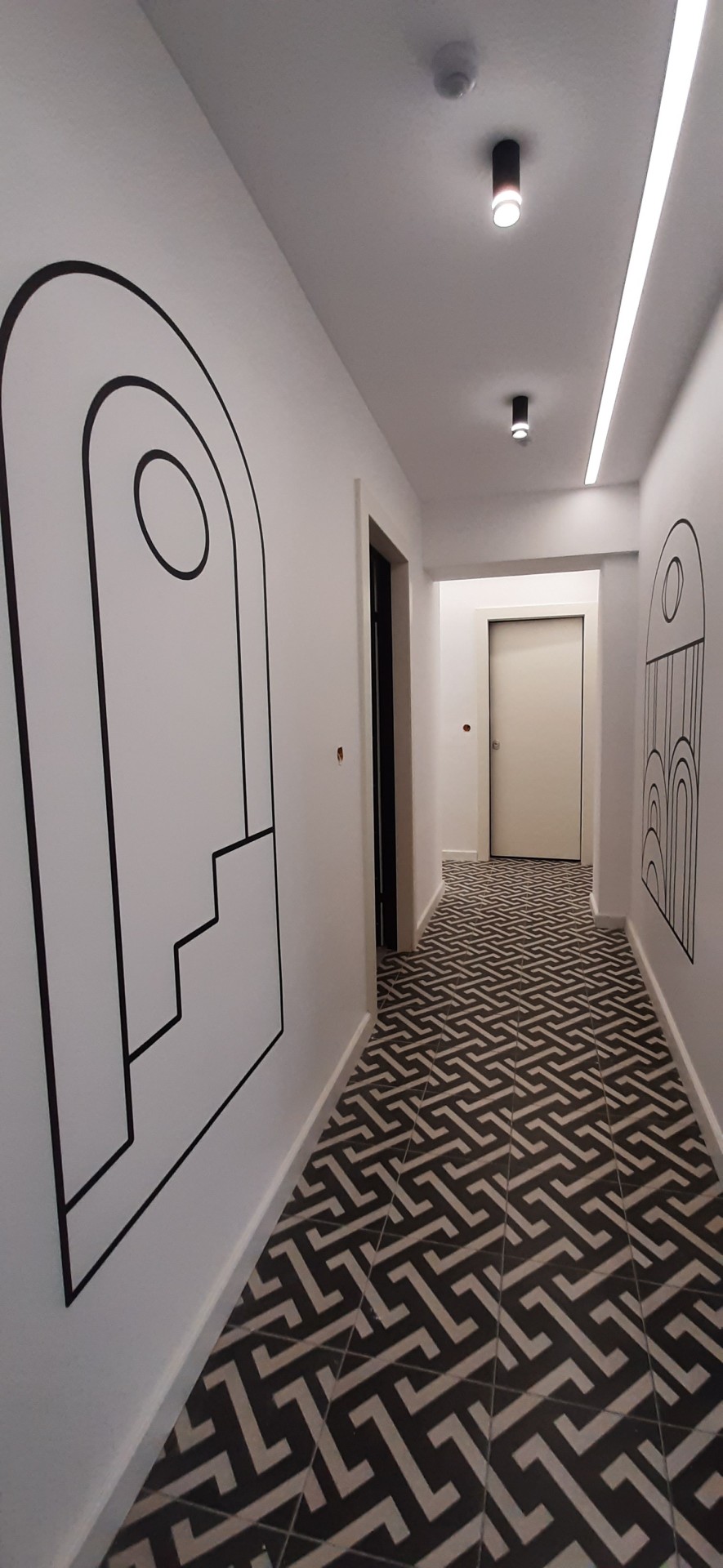
#greece#macedonia#architecture#giannitsa#makrisis#thessaloniki#white#black#valaoritou#valory#21dsarchoffice#21ds#geometric#geometric patterns#aesthetic#interiors#interiordesign
7 notes
·
View notes
Link

The racism virus has infected also pupils in Giannitsa, Central Macedonia. Pupils from the vocational high school held a protest against refugees and migrants on Friday. Holding Greek flags, they chanted “Illegals out of schools.”
Some 50 pupils first occupied their school and later marched through the center of the town with main slogan “Illegals out of schools” and singing “Macedonia is Greek.”
A reporter of local media logos pellas who was covering the protest was threatened by a pupil. “I break your camera,” the teenager boy told the reporter.
As the seed of racism is spreading especially in Northern Greece, residents of Karitsa village by Larissa, Central Greece, blocked the main road late on Wednesday in order to prevent a bus with 40 unaccompanied minors from reaching a hotel for the children’s resettlement.
The chairman of the village and the local community had decided to not accept more refugees, after 73 people were resettled in another hotel there. Led by the chairman, the locals blocked both the entrance and exit of the village.
New Democracy reportedly expelled a local official from Kozani due to racist and bigot posts on social media. Reason for the man to be kicked out of the conservative party was a post on Facebook where he wrote “these blacks […] should be thrown in the Aegean Sea.”
4 notes
·
View notes
Link
Άλλο ένα βίαιο επεισόδιο καταγράφηκε στα Γιαννιτσά, με μία 13χρονη που ξυλοκοπήθηκε από τέσσερα άλλα κορίτσια ηλικίας 13 ως 15 χρόνων! Σύμφωνα με τον πατέρα της 13χρονης, το επεισόδιο έγινε στις 9.30 το βράδυ του περασμένου Σαββάτου στο 1ο Γυμνάσιο Γιαννιτσών, όπου τα τέσσερα κορίτσια επιτέθηκαν στην κόρη του, την γρονθοκόπησαν και την χτύπησαν στο κεφάλι, χωρίς καμιά αιτία. Η μικρή διακομίστηκε στο νοσοκομείο Γιαννιτσών και από εκεί, λόγω έλλειψης παιδοχειρουργού, στο νοσοκομείο “Παπαγεωργίου” της Θεσσαλονίκης όπου παρέμεινε για νοσηλεία για δύο ημέρες με κάκωση κεφαλής και μετατόπιση αυχένα, που καθιστούσαν υποχρεωτική τη χρήση κολάρου, ενώ βρίσκεται σε πολύ κακή ψυχολογική κατάσταση. Οι γονείς της μαθήτριας θα καταθέσουν τη Δευτέρα μήνυση για πρόκληση σωματικής βλάβης, εξύβριση και απειλή κατά των τεσσάρων κοριτσιών, για τα οποία υποστηρίζουν ότι έχουν παρελθόν σε βίαια επεισόδια, καθώς κάνουν μπούλινγκ σε άλλα συνομήλικα παιδιά, ενώ πριν από δύο εβδομάδες είχαν χτυπήσει ακόμη ένα κορίτσι. Αντίστοιχης αγριότητας περιστατικό είχε συμβεί στις αρχές του μήνα στη Λαμία. Τότε, μια 14χρονη είχε ξυλοκοπηθεί με ιδιαίτερη βιαιότητα από τρεις 17χρονες, μία Ελληνίδα, μία Ρουμάνα και μία Αλβανίδα. Με αφορμή μια φραστική αντιπαράθεση, οι τρεις ανήλικες είχαν ρίξει στο έδαφος τη μικρή, την κλωτσούσαν και την… δάγκωναν (!), ενώ την είχαν εγκαταλείψει αιμόφυρτη! (πληροφορίες απο το makeleio)
0 notes
Text
GREECE - my place of love ❥

#loutra#pozar#hellas#ellada#pellas#giannitsa#edessa#love#it#vacation#mediation#meditating#in#nature#only#good#vibes#greece#dont#wanna#leave
1 note
·
View note
Text
Old Giannitsa Η ομάδα δημιουργήθηκε για ανθρώπους από όλο τον κόσμο που ενδιαφέρονται για την πόλη των Γιαννιτσών.
Η ομάδα δημιουργήθηκε για ανθρώπους από όλο τον κόσμο που ενδιαφέρονται για την πόλη των Γιαννιτσών.
www.facebook.com/groups/oldgiannitsa
0 notes
Photo
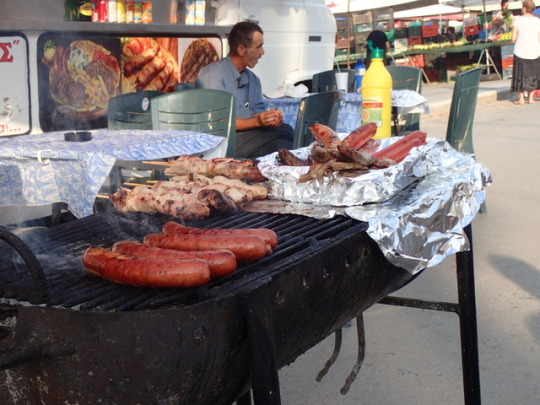
Yum. Open air Market in Giannitsa, Greece.
2 notes
·
View notes
Photo
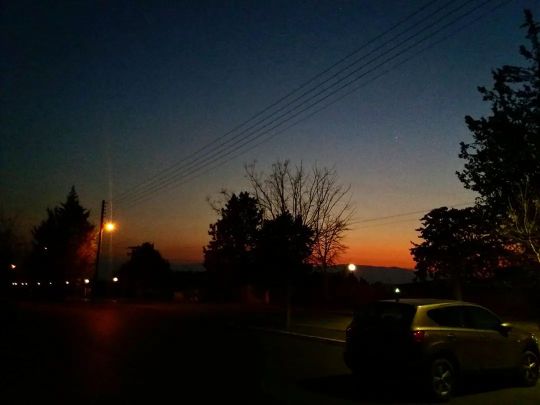
Sunsets, evenings and twilight are my favourite times of the day. The colours are hard to capture with a camera or water colours but somehow the mind's camera always remembers! 🌆🏙️🌃🌌🌇📸✨🥰😍❤️☺️ #photography #phonephotography #nightphotography #night #nightsky #sunset #sky #skyline #buildings #cityskyline #cityscape #citylife #city #citystreets #streets #hometown #giannitsa #afternoonsky #afternoon #afternoonwalks #spring #pondering #shadows #shadowsandlight #cars #carlights #sunsetsky #sunsets_captures #parkinglot https://www.instagram.com/p/Cpi1BAzDHjI/?igshid=NGJjMDIxMWI=
#photography#phonephotography#nightphotography#night#nightsky#sunset#sky#skyline#buildings#cityskyline#cityscape#citylife#city#citystreets#streets#hometown#giannitsa#afternoonsky#afternoon#afternoonwalks#spring#pondering#shadows#shadowsandlight#cars#carlights#sunsetsky#sunsets_captures#parkinglot
14 notes
·
View notes
Note
Hey Lyd, you don't happen to live near Giannitsa, do you?
nope, nowhere near it
9 notes
·
View notes
Text
Από την Τετάρτη 22 Μαρτίου έως και την Παρασκευή 24 Μαρτίου 2023 η Ιερά Μονή Αγίας Παρασκευής Γιαννιτσών θα υποδεχθεί τον Τίμιο και Ζωοποιό Σταυρό προς Αγιασμό και ενίσχυση των πιστών σύμφωνα με το ακόλουθο πρόγραμμα.
Τετάρτη 22 Μαρτίου
17.00 Υποδοχή Τιμίου Ξύλου
17.15 Ιερόν Ευχέλαιον
18.00 Θ΄ Ώρα...
https://orthodoxia.online/orthodoxia-news/ta-giannitsa-ypodechontai-to-timio-xylo/?feed_id=17830&_unique_id=64176cf9280b9
0 notes
Text

1st half of the 2nd century BC. Found in 1900 among rubble above the north hall of the Lower Agora in Pergamon.
The head, along with the rubble, may have fallen from a building uphill from the agora, perhaps the gymnasium.
- Istanbul Archaeological Museum.
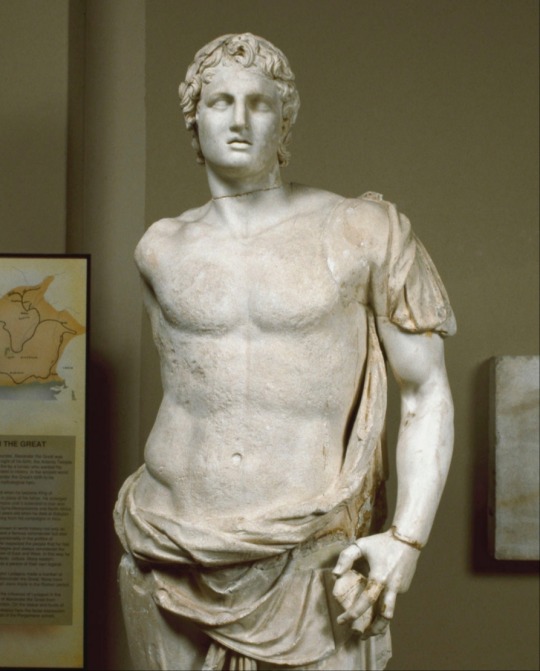
Marble statue from Magnesia ad Sipylum, Lydia. Mid 3rd century BC.
Alexander the Great, wearing a himation (cloak) around his left shoulder and lower body, and with his left hand holding the handle of his sheathed sword.
Found with a marble base inscribed with a dedication to Meter Sipylene, the local mother goddess, and the signature of Means of Pergamon.
-Istanbul Archaeological Museum.

Ptolemaic period, portrait of Alexander the Great, 3rd century BC, from Chatby.
-Geneva Museum of Art and History.

Bust of Alexander the Great in his classic head tilt pose. The original is from Alexandria, Egypt. 2nd - 1st century BC.
Earlier portraits of Alexander tend to appear more heroic and mature, while posthumous portraits, like this example, portray Alexander as a more youthful, god-like character. He has longer hair, a more dynamic twist of the head and an upward gaze; in fact, more like the description of Alexander in literary sources.
-British Museum, London.
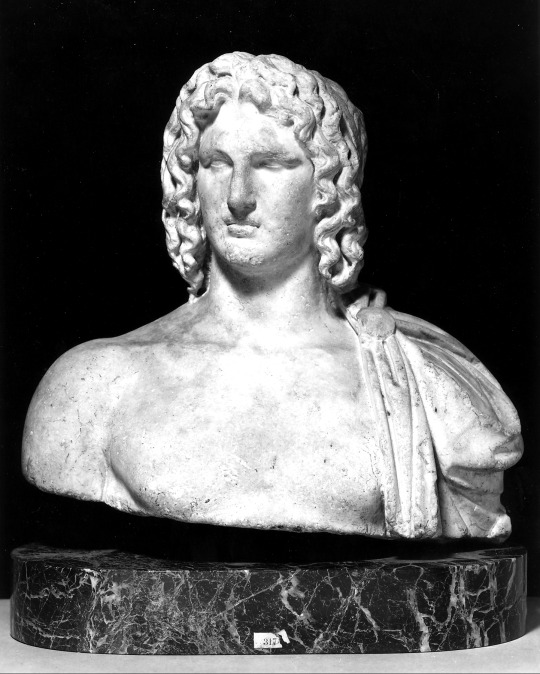
The classically youthful face, the anastole, the long wavy locks, and the hole in the crown for the insertion of a star (a symbol of his deification) identify this work as a portrait of the ruler.
2nd century CE. The Roman date is indicated by the deep grooves in the hair and the artist's rendering of the folds of the mantle as drilled channels.
-Walters Art Museum, Baltimore, Maryland.
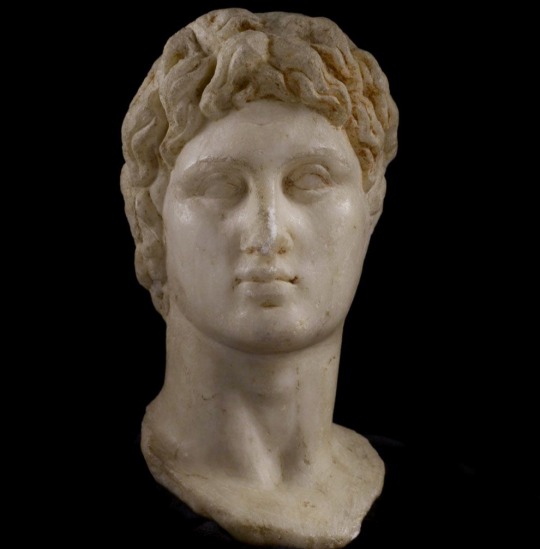
Alexander the Great, depicted in typical Hellenistic style in this alabaster bust from Egypt.
-Eygptian Antiquities Museum, Cairo.

Marble head of Alexander the Great. Chance find from the area of Giannitsa near Pella. 325-300 BC.
-Pella Archeological Museum.

The "Acropolis type", found in 1886 near the Erechtheion of the Athens Acropolis.
Thought to be an original work of the Athenian sculptor Leochares, made 340-330 BC, perhaps after the Battle of Chaironeia (338 BC) when Alexander visited Athens.
-Acropolis Museum, Athens.

Alexander and his copain Hephaestion. Both life-sized heads are said to have been found in Megara as part of a funerary monument for some courtier who admired and probably worshipped Alexander.
The ensemble has been dated to 320 BC, meaning that it was made only three years after Alexander’s death in 323 BC. Striking that these are true Greek heads and no copies made by the Romans in later years.
- Getty Villa, Malibu, LA.
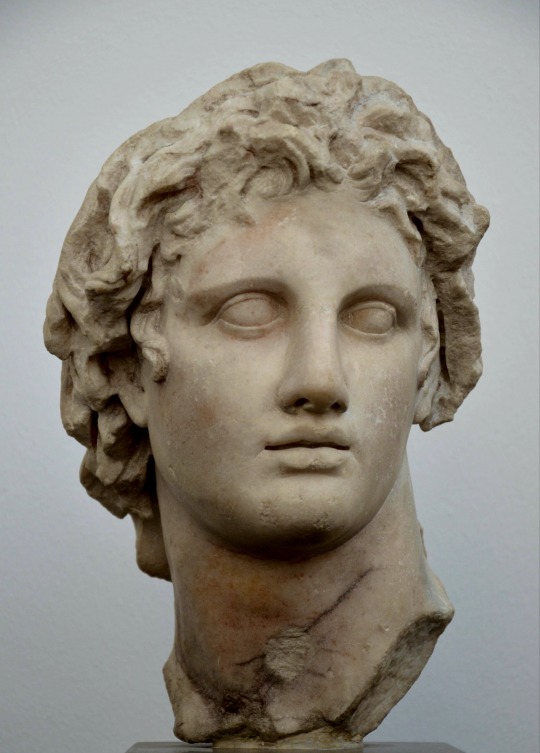
Alexander the Great, copy of a portrait of Lysippos, from Alexandria, Egypt, 3rd cent. BCE.
-Ny Carlsberg Glyptotek, Copenhagen.
15 notes
·
View notes
